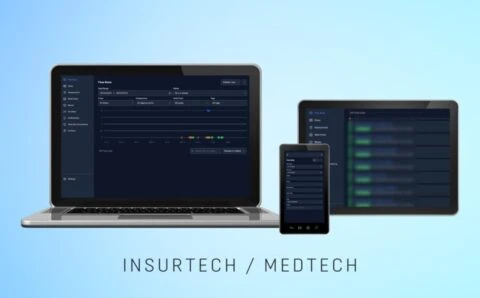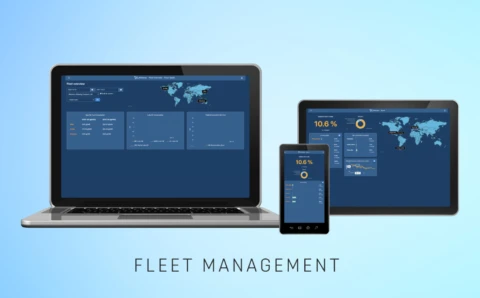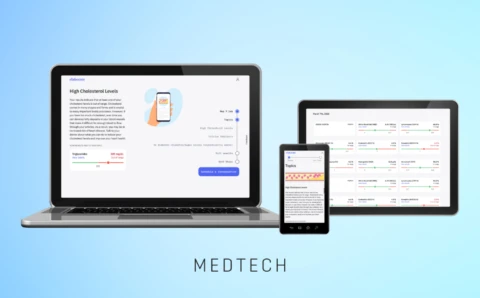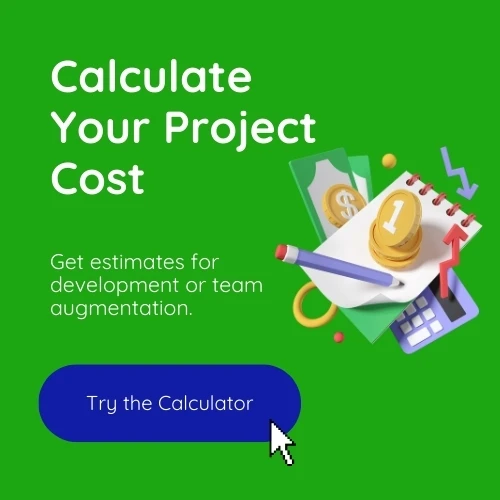
Before we unravel just how much does an MVP cost to build, let us start with a little misconception check! Because, if you landed here, there’s a chance you’ve got a few misbeliefs about Minimum Viable Products – or so-called MVPs – we probably should clear up first off.
Would you let us know if you resonate with any of these statements?
-
- MVPs seem pointless. Shouldn’t I just build the whole app straight away?
- MVP is just a barely-functional skeleton app, right?
If so, let us introduce you to the idea of an MVP first off, because *spoiler alert*, the correct answer is no for both the aforesaid opinions!
An MVP, or in other words, a Minimum Viable Product is an initial implementation of software created holding the bare minimum of functionality and design. Once an app development passes its Proof of Concept and Prototype evaluation stages, an MVP is where the user finally gets to see the product hands-on.
Introduced by Eric Ries as a Lean Startup technique, MVP gained quick recognition among startups, entrepreneurs, businesses, as well as investors.
The purpose of building an MVP revolves around testing the waters of a product’s potential users and its market without breaking the bank.
So, without further ado, how about we unravel why an MVP is a necessity and how you can calculate the costs involved to make one?
Table of Contents:
Difference between PoC, prototype, and MVP
PoC, prototype, and MVP are three methods that collectively contribute to an app development’s initial stage.
Although these terms are incorrectly but interchangeably used at times, in practice PoC, prototype, and MVP host entirely different methods focusing on contrasting aspects.
PoC (Proof of Concept)
As its name rightfully suggests, creating a Proof of Concept centers on evaluating proof that a particular concept should work in the context of a product. A PoC looks into the technicalities of an idea: is the proposed model feasible? Is it viable? How can it technically be achieved? These are the types of questions a Proof of Concept aims to answer.
Since these logical points can be answered internally without exposing the currently underdeveloped ideas to the end-users, a Proof of Concept is usually handled internally among the development team(s).
Unlike a prototype or an MVP — both of which are developed after any PoCs — a Proof of Concept doesn’t acknowledge UI/UX-related concerns. Beneficially, this helps the PoC allocate any expenditures solely on the analytical and logical side of the suggested concept.
In practice, a PoC might be a document, a separate project, an internal team meeting, or even a “tech demo” sort of demonstration showcasing the proposed idea.
Prototype
When a Proof of Concept concentrates on the “can it be done?”, a prototype aims to answer the question “how should it be done?”. Because, despite how achievable a product’s Proof of Concepts deemed a product to be, no matter how innovative and groundbreaking your application idea is, what’s the point if its target users browse to the next available web app because your app seemed too ugly to even try out, right?
As they say, “a picture is worth a thousand words”. Hence, in contrast with PoCs, a prototype is where an idea initially reaches its end-users; and this time, in a visual format.
Prototypes achieve this by visualizing the app idea through various forms of designs:
-
- Paper sketch
No bells and whistles! A paper sketch is exactly what it sounds like. It simply involves drawing how you imagine your application’s User Interface would be on one or more papers. This way, these sketches can be presented and/or demonstrated to your end-users and receive their valuable feedback.
-
- Interactive model
Instead of asking your target users to flip and shuffle loads of papers, an interactive model helps them navigate your app’s UI in a clickable digital format.
MVP (Minimum Viable Product)
In contrast with both Proof of Concepts and prototypes, a Minimum Viable Product is the initial stage a product reaches a usable state.
An MVP grasps the learnings achieved through
-
- technical feasibility evaluations from Proof of Concepts
- Usability and UI/UX user feedback from prototypes
and builds a functional application housing just the essential core features.
Hence, instead of giving the target users only a visual feel of the product like with prototypes, an MVP lets them test out a workable version of the application hands-on.
Benefits of building an MVP
Let’s figure out why you’d need an MVP in the first place prior to exploring the cost to develop an MVP.
Minimizes your development cost
Sounds a bit ironic, doesn’t it? Wait, doesn’t it just add to the whole cost? You might be thinking. Well, the answer would be, not really.
Imagine on one fine day a certain Jim pitched a striking app idea to a well-known investor. The investor was almost sold until he figured out the said app was already under development and was already over budget. That’s when you come in, holding an already developed MVP featuring just enough features to get your point across, and even a merry chance for your investor to try your app out firsthand.
Compared to the fully-fledged application Jim set out to develop to the brim — but ended up broke to do so — with all the functional and non-functional features it could possibly have, the MVP app you developed could be finished and shipped out at a much lower cost.
Test your business idea
Why make loads of assumptions and evaluations on how your product would perform in the market when you could literally put it in there and see for yourself?
Launching an MVP to the public web would give invaluable insight to the actual users interested in your product, and what features they value on it. These findings can be used to adapt the product’s pathway to better suit its audience.
As a prime example of this, consider Instagram. Taking just eight weeks to develop its initial MVP, Instagram — called “Burbn” at the time — planned to be more or less another Facebook with its GPS check-in features, posts, and photo sharing. But, after studying feedback from their MVP, Burbn creators rightfully figured out the app’s users cherished its photo-sharing feature and chose to strip off other features to focus solely on that. Hence, Burbn became Instagram, and the rest is history. Who knows? If Burbn started as a fully-fledged Facebook alternative instead of starting as an MVP to test out its business idea, half of us might not have even heard of it in the current day!
Get your first customers
Releasing an MVP to your target users while your product is still in its adolescent days presents you with a unique opportunity to build rapport with early customers interested in your product.
Along with providing feedback on your product, any customer charmed by it would be more than willing to pass around the news of your intriguing app with their friends and peers.
As is evident, this would be much safer than waiting till your product is fully developed and released to the web only to realize next to no customers seem to be fascinated by your product, and implementing any feedback they give would involve reconstructing the whole solution!
Get feedback from your target audience
Producing and spreading a functional MVP among your potential end-users brings you a fascinating chance to gather their feedback on your product. For instance, you’d be able to observe exactly which features the end-users
-
- like and adore.
- tend to spend the most time with.
- ignore or even hate.
Furthermore, you could survey the users on features they’d like to see on your application.
Afterward, all you’d have to do would be to implement the changes and release the next MVP iteration to your waiting customers!
Reduce time to market
One could have the most enthralling and original idea for an app; but, what’s the point if by the time it’s fully developed and concluded hundreds of others have already come up with the same idea and the market’s already filled with their applications?
MVPs bring upon a solid hack to this conundrum. While others are developing comprehensive and exhaustive apps to the same idea — or they haven’t even thought of it yet — you could bring your idea to fruition in much less time and cost to eventually build an MVP app that hands out the basic functionalities to the users before anybody else. Now, when the others catch up to you, you’d have already built a committed following for your MVP software and the app would have passed an ample number of updates making it way more stable than theirs.
Attract investments
Let me invite you to see an MVP as an investment. And, when it comes to investments, who better to talk about than any potential investors who’d want to invest in your product?
We’re sure you’d agree that a chance of an investor funding your product solely breaks down to how well you can convince them in your pitch. But, the aforementioned convincing can only go so far if all you have to show the stakeholders are a few dusty paper sketches.
Assume you reach an investor along with two other competitors, each of you about to present quite similar app ideas. Nevertheless, one of them, Cathy, only holds some sketches of her product idea; and the other is our Jim, knee-deep building a fully-fledged application that’s far from seeing the light of day. You’re the only one who managed to create an MVP and test it out with real-world end-users. Thus, you approach the investor along with the MVP and its proven success in the market. Unlike Cathy, you’ve got a fully-functional app to show him, which the investor can try out then and there in real-time. And, contrary to Jim, you already have a completed product launchable to the market right away. So, at this point, it’s quite obvious who so to speak takes the cake from the investor, isn’t it?
Unleash MVP’s Power!
Learn how a Minimum Viable Product can save you time, money, and reduce risk.
MVP development cost factors
Alright, with the importance of an MVP app figured out, let’s decipher what factors contribute to the development cost to actually make one, shall we?
Design
We’re sure you’d agree that a vital part of an MVP development is its design. Because, after all, this MVP stage is when your target audience initially gets to feel and taste your product. Hence, with it arrives the responsibility to make a good first impression on them.
Designing an MVP could include several aspects such as:
-
- Wireframes
Before designing the MVP’s precise UI elements, creating a wireframe showing the basic skeleton of your product would surely help layout the groundwork of your product.
-
- Mockup
This is the intermediary stage on a product’s design flow where the focus is on the visual representation unlike on the structure as with wireframes.
-
- Prototype
A prototype is the final stage of an app’s design where in addition to representing the UI look and feel of the product, its interactive elements can also be simulated.
Each of these phases can theoretically be performed individually where you’d have to bear the costs of UX design software like Adobe XD. But, it’s advisable to take the help of a UX designer for the task which would, in turn, add to the MVP app development cost.
Features
Regarding the cost to build an MVP app, the collection of features you’d choose to add to your MVP plays a considerable part.
Since in theory an MVP is meant to hold the bare minimum of features, it becomes nothing less than a necessity to figure out which features should or shouldn’t make the cut. This could be performed by
-
- selecting out the most necessary and core features required for the app to function.
- gathering user feedback on features they’d prefer to see on your product.
Complexity
The MVP app cost directly correlates with the level of complexity you’d plan your MVP to possess.
For instance, a basic web app requiring a simple MVP with a couple of web pages would take much less time and manpower to create in contrast with a SaaS project necessitating a complex MVP with advanced features, e.g., cloud integration, database, to be minimum viable.
Integrations
On more occasions than not, chances are your MVP would require the help of several integrations to function.
For example, the integrations your MVP might need may come in the form of:
-
- external integrations: e.g., maps, payment gateways, external APIs.
- internal integrations: e.g., CRM.
Depending on the charges of these integrations, the cost to build an MVP app would face an additional overhead.
Quality of code
Given that maintaining the code quality is directly proportional to its development time and eventually the MVP app development cost involved, the quality of the code used in your product should not be a priority.
This is since the point of an MVP is to reach its target users at the earliest time possible to gain their feedback for required product alterations. Hence, the quality of the code should take the back seat over the product’s features.
Engagement model
In case you plan to allocate a remote team of developers or an agency providing you the required developers to build your MVP, the next concern would be the type of contract you would engage the said team or agency in.
Developer team engagement usually falls to one of two models: time & material and fixed price.
Time and material
This engagement model involves your developers in a time-based method. Since you’d be paying the developers for the exact amount of hours they worked on your product, the ‘time and material’ model holds comparatively higher flexibility and ultimately a lower cost. On top of that, the model also allows you to easily arrange any product changes even while the development is already in progress.
Fixed-price
When the product’s scope, deliverables, and charges are established ahead of time with the team of developers, it’s called a ‘fixed-price’ engagement. At a glance, this model may seem like the cheaper and stable option of the two since you’d prematurely know the exact cost you’d have to allocate for the MVP development, but since in actuality you’d have to reserve an additional buffer amount to the fixed price you agreed upon with the team just to account for any risks, eventually this model would end up costing you higher than the time and material model.
Hourly rates
The hourly rate you would end up paying the developers of your MVP depends on the following factors: location and expertise.
Location
Due to the contrasting costs of living and the average salaries of different locations around the globe, developers residing in different areas tend to charge varying amounts for their development services.
For instance, a North American developer might charge you close to $100-$180 of an hourly rate whereas an Eastern European developer could efficiently do the same for a rate of $30-$60.
Expertise
Quite understandably, a developer with more experience and expertise in the particular technologies used in your MVP would charge you more than a novice developer.

AI Healthcare Platform
The AI-powered solution streamlines patient interactions and admin tasks, boosting efficiency and productivity in European healthcare facilities.

Spark
Spark empowers fleet operators with real-time fuel data, efficiency rankings, driving smarter decisions, reducing costs and environmental impact.

Elaborate
With Elaborate’s tool, patients receive lab results with clear summaries and steps through automated notifications and an easy-to-use interface.
How to calculate an MVP development cost
Before diving into detailed calculations, you can use an MVP cost calculator to get an initial estimate of your development cost.
Okay, we fathomed out our whys and whats regarding the cost of MVP development. Ergo, the time has come to look into the how.
How much does it cost to build an MVP?
The million-dollar question; hopefully, not literally we assume.
As an answer to this question let us introduce you to a seemingly simple — yet magically accurate — formula:
MVP development cost = rate * development time
That’s all it is! But, how about we decrypt this overly simplified equation just to make things a bit clearer?
-
- rate
As we discussed in the previous section as well, this rate variable simply denotes the sum of charges necessitated by the developers engaged in the development of your MVP.
-
- development time
The development time depends on all the elements we discussed in the previous section MVP development cost factors. Consequently, this development time variable can be called the element you’d have direct control of; since unlike the rate that’d be provided to you externally, you’d have blunt authority to shape and reform those development cost factors as you please.
As they say, “time is money”. Nevertheless, on this occasion, your money is on the time!
MVP development process
Let’s dive into some average cost estimations usually required for the development of an MVP. Do note that the MVP development costs and times can vary depending on the type and scope of your product.
Discovery
The discovery stage is performed before starting with the MVP development process, and would approximately take between two weeks and two months. The combined effort of UX designers, developers, Business Analysts, Tech Lead, and CTO required for this stage should sensibly be achievable under $10000.
Planning
The planning stage which follows the discovery stage would usually take from about a week to a month. Since this step would usually require collaborating with the technical team involved in the MVP, the costs would comprise of the team or individual charges they would demand.
Development
Design
Since the design of an MVP is performed at the beginning of its development, a designer would be required only for the initial phase of the product. Cost-wise roughly a Designer would cost about $3000-$6000 per month either as a development team member or as an individual freelancer. And time-wase, an MVP design tends to take about 75 – 125 hours to complete.
Back-end
Since the back-end of an MVP app would need to be laid out since the start of its development, a back-end team or individual developer would be required during the entire process. You should be able to find a back-end developer from Eastern Europe for an average rate of $4000-$8000 per month. Time to complete the back-end development of your MVP is likely to take around 200 hours.
Front-end
Similar to the back-end, building the user-facing front-end would require to begin from the commencement of the MVP development process, just the same. And, the current cost of a front-end developer or team would correspondingly be about the same as for a back-end developer, which would roughly be around $4000-$8000 per month. Similar to the back-end, the front-end development would usually take about 200 hours, as well.
Instead of opting for separate developers for the front-end and the back-end, you could settle upon full-stack developers who’d provide you the best of both worlds.
Testing
A Quality Assurance personnel would be needed for the complete duration of the MVP development. Regarding the costs, in 2022 you could choose manual QA for around $3000 per month or AQA for about $4500+/month. Based on the complexity of the project, manual QA would suffice some while another would call for a mix of manual and automated QA.
Deployment
Since it’s the stage your MVP would finally reach its end-users, the deployment step holds similar importance along with the rest. For simple apps, the back-end team would be able to handle the deployment which would take just a couple of days. But, if your MVP’s design is complex enough, it’d demand a DevOps engineer to monitor the project daily or even engage full-time. DevOps engineers cost about the same as a developer ($4000-$8000 per month) or a bit higher.
Maintenance
Although the development of an MVP ends at the previous deployment stage, its consistency in the market can only be assured with continuous monitoring of its performance and applying any required fixes & changes. Hence, we recommend agreeing on particular SLA commitments with your development team for the maintenance of your MVP for a preferred duration. Cost-wise, you could establish either monthly retainers or hourly billing based on the required effort for your MVP maintenance.
Build Your MVP with Experts
Let us guide you through the MVP development process from concept to launch.
MVP cost examples
Hence, with that knowledge on MVPs and the costs involved, how about we check out a few real-world examples of successful MVPs?
Zappos
Back in 1999, Nick Swinmurn launched an MVP even before the term existed. He simply hosted a basic e-commerce site holding a few pictures of shoes from the mall next door – a classic example of a Minimum Viable Product, wouldn’t you agree?
Senti
Testing the validity of their product idea through a fake doors MVP method, Senti has created a smart garment for asthma and COPD patients:
MusicTeam
Bringing to fruition an app idea from Canadian music industry experts, PLANEKS developed an MVP for artists to efficiently organize their metadata:
After its evident success, the MusicTeam MVP was developed into a fully functional product by PLANEKS.
Uber
Building just a simple web-based iPhone app to book their rides and a single car for all the transports, Uber (then UberCab) was a prime example of a Minimum Viable Product:
Pebble
Successfully using crowdfunding, Pebble raised an amount of over 10 million dollars for the development of their MVP for a smartwatch:
Time to make the Minimum move for that Viable Product
Hence, after plummeting headfirst to the comparatively way shallow depths of unraveling truly how much does MVP cost to build, we have reached the end of our article! We explored why we’d need an MVP in the first place, what factors into the cost of making one, and how we can go off calculating the cost of a Minimum Viable Product. Further, we looked into some examples of successful MVPs in the real world.
Thus, after grasping the somewhat hidden yet crucial importance of an MVP and unrevealing the costs involved, are you ready to start developing an MVP? Feel free to reach out to us and we can discuss all your MVP concerns and more.


